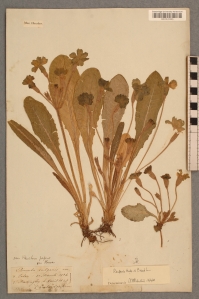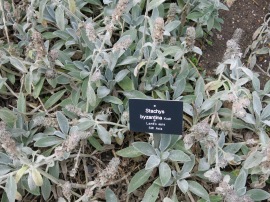 Plant hunters, botanists and natural scientists in the 19th century were hungry to discover and understand the expanding natural world. The quest for knowledge about the flora of distant countries had been fuelled by famed plant hunters, such as Sir Joseph Banks, who with travelled with Captain Cook to the South Pacific in the eighteenth-century.
Plant hunters, botanists and natural scientists in the 19th century were hungry to discover and understand the expanding natural world. The quest for knowledge about the flora of distant countries had been fuelled by famed plant hunters, such as Sir Joseph Banks, who with travelled with Captain Cook to the South Pacific in the eighteenth-century.
In the 19th century, Sir Joseph and Sir William Hooker were enthusiastic plant collectors. Sir William Hooker later became Director of the Royal Botanic Garden, Kew in London. Charles Darwin was friend and student of the new Cambridge University Botanic Garden founder, John Stevens Henslow, as well as of Sir William Hooker’s son, Joseph Hooker. Darwin’s specimens collected while on the Beagle voyage, 1831 – 1836, are now kept in the Cambridge University Herbarium. Henslow prepared Herbarium sheets of around 950 of the more than 2,700 plants collected by Darwin.

The Cambridge University Herbarium includes numerous collections of flora from the British Isles and across the globe. These include the collections of John Lindley (19th century) and Peter Derek Sell (20th – 21st century) co-author of the Flora of Great Britain and Ireland. Peter Sell began working in the Herbarium in 1944 and has collected over 25,000 specimens from across Britain and Europe.
 Some introduced plants are now so familiar in Britain gardens that we may have forgotten their exotic origins, from Americas, South Africa, India and China. For example, alliums (from Asia), geranium (Geranium procurrens introduced in the early 20th-century from the Himalayas), Lamb’s ears (Stachys byzantina introduced in the 18th-century) and fuchsia (Fuchsia triphylla from the island of Hispaniola) are commonly found in British gardens.
Some introduced plants are now so familiar in Britain gardens that we may have forgotten their exotic origins, from Americas, South Africa, India and China. For example, alliums (from Asia), geranium (Geranium procurrens introduced in the early 20th-century from the Himalayas), Lamb’s ears (Stachys byzantina introduced in the 18th-century) and fuchsia (Fuchsia triphylla from the island of Hispaniola) are commonly found in British gardens.
 Learn more about the University of Cambridge Herbarium and its historic collections.
Learn more about the University of Cambridge Herbarium and its historic collections.
The Chronological Bed was considered ‘very interesting and novel’ when it was originally planted in 1958. The Chronological Border features herbaceous and shrubs brought to Britain since the time of the Romans and displays plants collected from across the globe from 1550 to the present day.
 The Chronological Bed was moved to its present position in 1977. Today, its plantings have matured into large colourful specimens, ranging from early Lady’s Mantle to more contemporary geranium species. (Clockwise from above left) Sisyrinchium striatum, a herbaceous perennial commonly known variously as Satin Flower, Argentine Blue-Eyed Grass or Yellow-Eyed Grass which originates from Chile and Argentina; Stachys byzantina Lambs’ ear from Turkey and Iran; the bright California Poppy Eschscholzia californica and Sweet Pea Lathyrus odoratus from the eastern Mediterranean.
The Chronological Bed was moved to its present position in 1977. Today, its plantings have matured into large colourful specimens, ranging from early Lady’s Mantle to more contemporary geranium species. (Clockwise from above left) Sisyrinchium striatum, a herbaceous perennial commonly known variously as Satin Flower, Argentine Blue-Eyed Grass or Yellow-Eyed Grass which originates from Chile and Argentina; Stachys byzantina Lambs’ ear from Turkey and Iran; the bright California Poppy Eschscholzia californica and Sweet Pea Lathyrus odoratus from the eastern Mediterranean.

